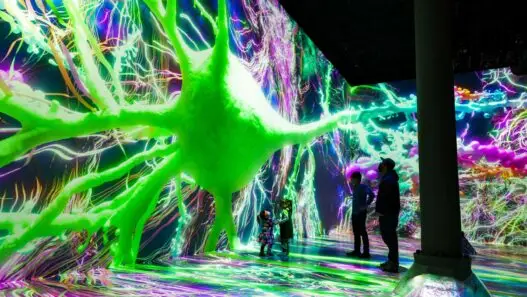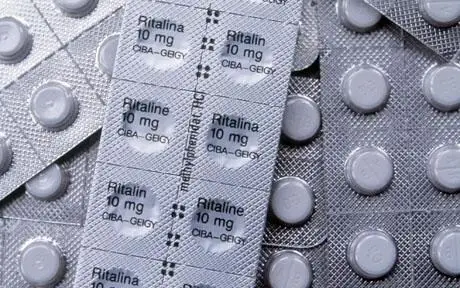Introduction: The Role of Ritalin in Focus and Attention
Ritalin (methylphenidate) is one of the most widely prescribed stimulants for treating Attention Deficit Hyperactivity Disorder (ADHD) and narcolepsy. While often compared to Adderall, it has unique effects on dopamine and norepinephrine, making it essential for individuals struggling with focus, impulse control, and cognitive performance.
But how exactly does Ritalin work? Why does it help with ADHD, and what are the risks of misuse? This article explores the neuroscience, effects, and safety profile of Ritalin, backed by key research and scientific citations.
1. What Is Ritalin?
🔹 Chemical Name: Methylphenidate
🔹 Drug Class: Central Nervous System (CNS) Stimulant
🔹 Common Uses: Treats ADHD and narcolepsy, sometimes used off-label for cognitive enhancement
🔹 Forms: Tablets, extended-release capsules, transdermal patches
How Is Ritalin Consumed?
- Immediate-release (IR): Effects last 3–4 hours (e.g., Ritalin IR)
- Extended-release (XR): Effects last 6–12 hours (e.g., Concerta, Ritalin LA)
- Transdermal patch: Gradual absorption over 9–12 hours (e.g., Daytrana)
🔹 Duration of Effects: Short-acting (3–4 hours) to long-acting (10–12 hours), depending on formulation.
2. How Ritalin Affects the Brain: The Dopamine and Norepinephrine Boost
Ritalin works by blocking the reuptake of dopamine and norepinephrine, increasing their availability in the brain (Volkow et al., 2001).
Key Effects on Neurotransmitters:
🔹 Dopamine Increase:
- Dopamine is essential for motivation, focus, and reward processing.
- ADHD is linked to dopamine deficiency in the prefrontal cortex (Arnsten et al., 2009).
- Ritalin increases dopamine, improving attention and impulse control.
🔹 Norepinephrine Modulation:
- Enhances alertness, reaction time, and energy levels.
- Helps regulate mood and executive function (Berridge & Waterhouse, 2003).
💡 Analogy: Imagine a classroom where students (thoughts) are talking over each other. Dopamine is the teacher who organizes the classroom, while norepinephrine ensures students stay engaged.
3. Why Ritalin Works for ADHD: Restoring Cognitive Balance
ADHD is associated with underactivity in the prefrontal cortex, which controls attention, decision-making, and impulse regulation (Barkley, 2015).
How Ritalin Improves ADHD Symptoms:
✅ Enhances working memory and concentration (Spencer et al., 2005).
✅ Increases impulse control and emotional regulation (Aron et al., 2003).
✅ Reduces distractibility by strengthening focus-related brain circuits.
💡 Analogy: ADHD brains are like a radio with static interference—Ritalin tunes the signal, making thoughts clearer.
4. Ritalin vs. Adderall: What’s the Difference?
Both Ritalin and Adderall are stimulants, but they affect neurotransmitters differently:
| Feature | Ritalin (Methylphenidate) | Adderall (Amphetamine) |
|---|---|---|
| How It Works | Blocks dopamine/norepinephrine reuptake | Increases dopamine release + blocks reuptake |
| Onset of Action | Works quickly (30–60 min) | Slightly longer onset (60–90 min) |
| Duration | Shorter (3–4 hours IR, 8–12 XR) | Longer (4–6 hours IR, 10–14 XR) |
| Best For | Focus and short-term tasks | Sustained energy, motivation |
🔹 Ritalin = Best for focus, learning, and cognitive tasks
🔹 Adderall = Best for long-term energy and motivation
💡 Analogy: Ritalin is like a high-speed internet connection, while Adderall is like an adrenaline boost.
5. The Cognitive Enhancement Debate: Can Ritalin Be a Smart Drug?
Some people without ADHD use Ritalin for cognitive enhancement, but research shows mixed results.
Potential Benefits for Non-ADHD Users:
✅ Increases alertness and reaction time (Ilieva et al., 2015).
✅ May improve short-term memory but not complex problem-solving.
✅ Boosts motivation for repetitive tasks but can reduce creativity.
Risks of Non-Medical Use:
⚠ Can cause anxiety, insomnia, and dependence.
⚠ May impair flexibility and creative thinking.
⚠ Overuse can lead to dopamine depletion and emotional blunting.
💡 Analogy: Using Ritalin without ADHD is like forcing a car engine to run at max speed—it works, but there’s long-term wear and tear.
6. Side Effects and Risks of Ritalin
While Ritalin is safe when prescribed, misuse can lead to serious side effects.
Common Side Effects:
⚠ Appetite loss (up to 60% of users)
⚠ Insomnia (activates the CNS, disrupting sleep)
⚠ Increased heart rate and blood pressure
Serious Risks (High Doses or Misuse):
⚠ Dopamine depletion and emotional flatness
⚠ Increased anxiety and risk of paranoia
⚠ Potential for dependence and withdrawal
💡 Fact: Long-term Ritalin use does not increase addiction risk when taken as prescribed (Wilens et al., 2008).
7. Is Ritalin Addictive? Understanding Dependence vs. Misuse
While Ritalin can be habit-forming, its risk depends on how it’s used.
✅ Low Risk: Prescribed for ADHD, taken as directed
⚠ Moderate Risk: Used recreationally for focus/energy
❌ High Risk: Snorted/injected in high doses
🔹 Stopping Ritalin suddenly can cause withdrawal (fatigue, mood swings).
🔹 Tolerance can develop if overused, requiring higher doses for the same effect.
💡 Analogy: Ritalin is like caffeine—safe when used properly but risky in excess.
8. Final Thoughts: Who Should and Shouldn’t Take Ritalin?
Best Candidates for Ritalin:
✔ ADHD patients needing focus and impulse control
✔ Narcolepsy patients needing wakefulness
✔ People with executive function deficits
Who Should Avoid It?
❌ People with anxiety or high blood pressure
❌ Those with a history of stimulant addiction
❌ Non-ADHD users seeking long-term performance enhancement
Conclusion:
Ritalin is a powerful tool for ADHD and cognitive function, but it should be used responsibly. While it can enhance focus and executive function, misuse can lead to side effects, dependence, and long-term risks.





















